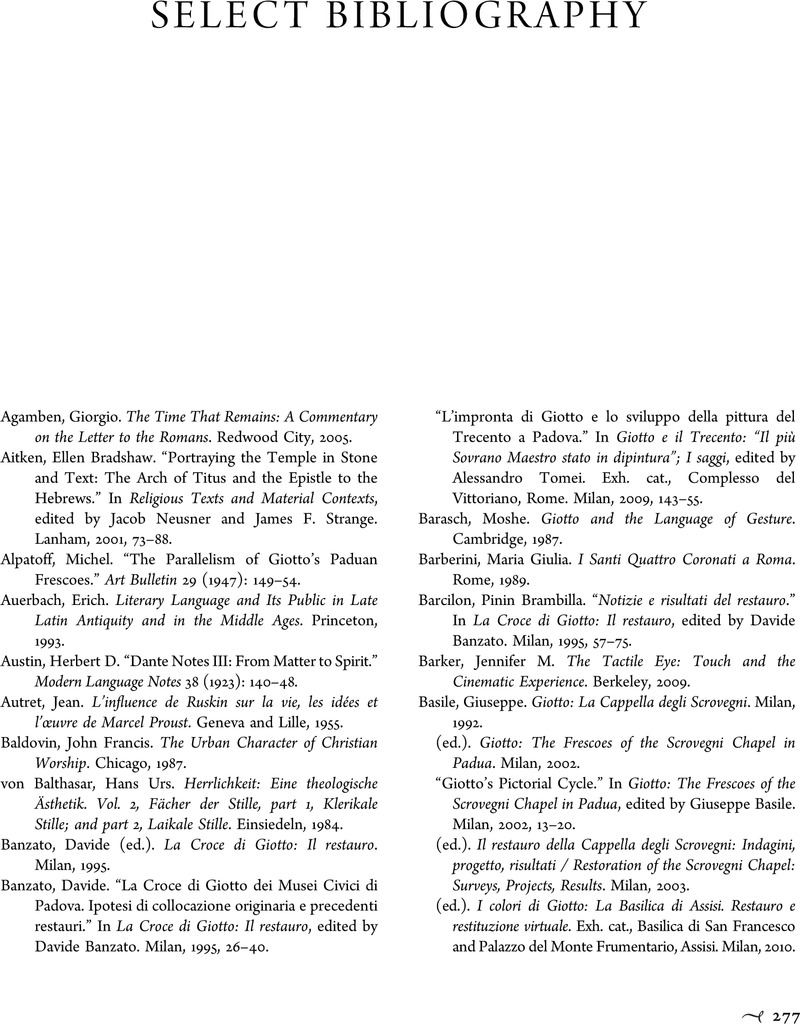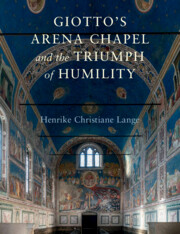Book contents
- Giotto’s Arena Chapel and the Triumph of Humility
- Giotto’s Arena Chapel and the Triumph of Humility
- Copyright page
- Dedication
- Epigraph
- Contents
- Figures
- Preface
- Acknowledgments
- Introduction
- Chapter 1 A Venetian Dream of Rome and Jerusalem
- Chapter 2 1300: The Moment of the Jubilee in Rome and in Padua
- Chapter 3 The Powers That Were
- Chapter 4 Giotto’s Painted Reliefs
- Chapter 5 Triumph and Apotheosis, Augustine to Dante
- Epilogue
- Appendices
- Notes
- Select Bibliography
- Index
- References
Select Bibliography
Published online by Cambridge University Press: 12 January 2023
- Giotto’s Arena Chapel and the Triumph of Humility
- Giotto’s Arena Chapel and the Triumph of Humility
- Copyright page
- Dedication
- Epigraph
- Contents
- Figures
- Preface
- Acknowledgments
- Introduction
- Chapter 1 A Venetian Dream of Rome and Jerusalem
- Chapter 2 1300: The Moment of the Jubilee in Rome and in Padua
- Chapter 3 The Powers That Were
- Chapter 4 Giotto’s Painted Reliefs
- Chapter 5 Triumph and Apotheosis, Augustine to Dante
- Epilogue
- Appendices
- Notes
- Select Bibliography
- Index
- References
Summary

- Type
- Chapter
- Information
- Giotto's Arena Chapel and the Triumph of Humility , pp. 277 - 292Publisher: Cambridge University PressPrint publication year: 2023



